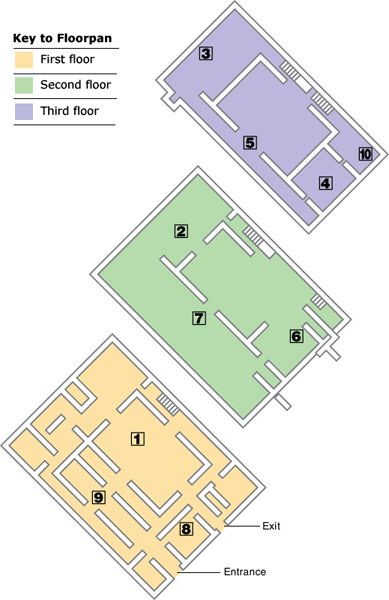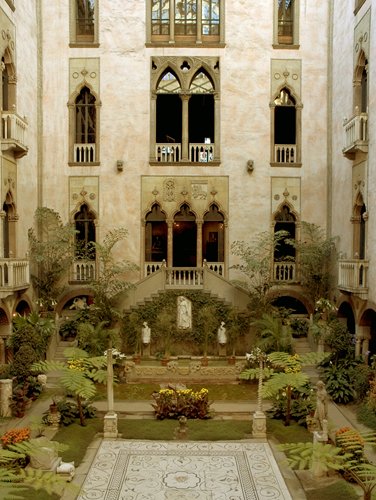One needn’t be a fervent patron of the arts to be
wowed by the Gardner Museum. Its namesake, who travelled tirelessly to
acquire the pieces now housed here, opened the museum in 1903 to befit
(some would say to rival) her staggering collection. The 15th-century,
Venetian-style palazzo is a veritable feast of artifacts, art, and
architecture in which flowers bloom, sculpted nudes pose in hidden
corners, and entire ceilings reveal their European origins.
|
Before Isabella
Stewart Gardner died in 1924 she stipulated in her will that Fenway
Court (as it was then known) and her collection become a public museum.
She believed that works of art should be displayed in a setting that
would fire the imagination. So the collection, exhibited over three
floors, is not arranged chronologically or by country of origin but
organized purely to enhance the viewing of the individual treasures. To
encourage visitors to respond to the artworks themselves many of the
2500 objects – from ancient Egyptian pieces to Matisse’s paintings – are
left unlabeled, as Gardner had requested.
|

|
Light salads and sandwiches are served in the museum’s café. Weather permitting, request a table outdoors in the garden.
|
|
|
The museum’s Tapestry Room hosts a concert series in the spring and fall. See museum website for more information.
|
|
|
No photography or filming is permitted in the museum.
|
|
|
Self-guided audio tour: $4.
|
|
Top 10 FeaturesThe Courtyard Gardner
integrated Roman, Byzantine, Romanesque, Renaissance, and Gothic
elements in the magnificent courtyard, which is out of bounds but can be
viewed through the graceful arches surrounding it.

Dutch Room The
space that houses some of Gardner’s most impressive acquisitions was
the scene of an incredible art heist in 1990: among the 13 works stolen
were a Vermeer and two Rembrandts. Gothic Room Appreciate
John Singer Sargent’s splendid and somewhat risqué 1888 portrait of Mrs
Gardner as well as medieval liturgical artwork from the 13th century. Titian Room The
most artistically significant gallery was conceived by Gardner as the
palazzo’s grand reception hall. It has a distinctly Italian flavor and
showcases Titian’s Europa, one of the greatest masterpieces in the US. Long Gallery Roman
sculptural fragments and busts line glass cases crammed with unusual
15th and 16th-century books and artifacts. One such rare tome is a 1481
copy of Dante’s The Divine Comedy, featuring drawings by Botticelli. Raphael Room Gardner
was the first collector to bring works by Raphael to the US; three of
the artist’s major works are on display here, alongside Botticelli’s Tragedy of Lucretia and Crivelli’s St. George and the Dragon. Tapestry Room This room houses two series of 16th-century Belgian tapestries, each comprised of five individual works: one depicts Scenes from the Life of Cyrus the Great and another Scenes from the Life of Abraham. Macknight, Yellow, & Blue Rooms Fans
of the Impressionists need look no further than these rooms, which
house portraits and sketches by the likes of Manet, Matisse, Degas, and
Sargent. Of particular note is Sargent’s Mrs. Gardner in White. Spanish Cloister With
stunning mosaic tiling and a Moorish arch, the Spanish Cloister looks
like a hidden patio at the Alhambra. But Sargent’s sweeping El Jaleo (1882), all sultry shadows and rich hues, gives the room its distinctiveness. Veronese Room With
its richly gilded and painted Spanish-leather wall coverings, it’s easy
to miss this gallery’s highlight: look up at Paolo Veronese’s
16th-century masterwork The Coronation of Hebe.
|